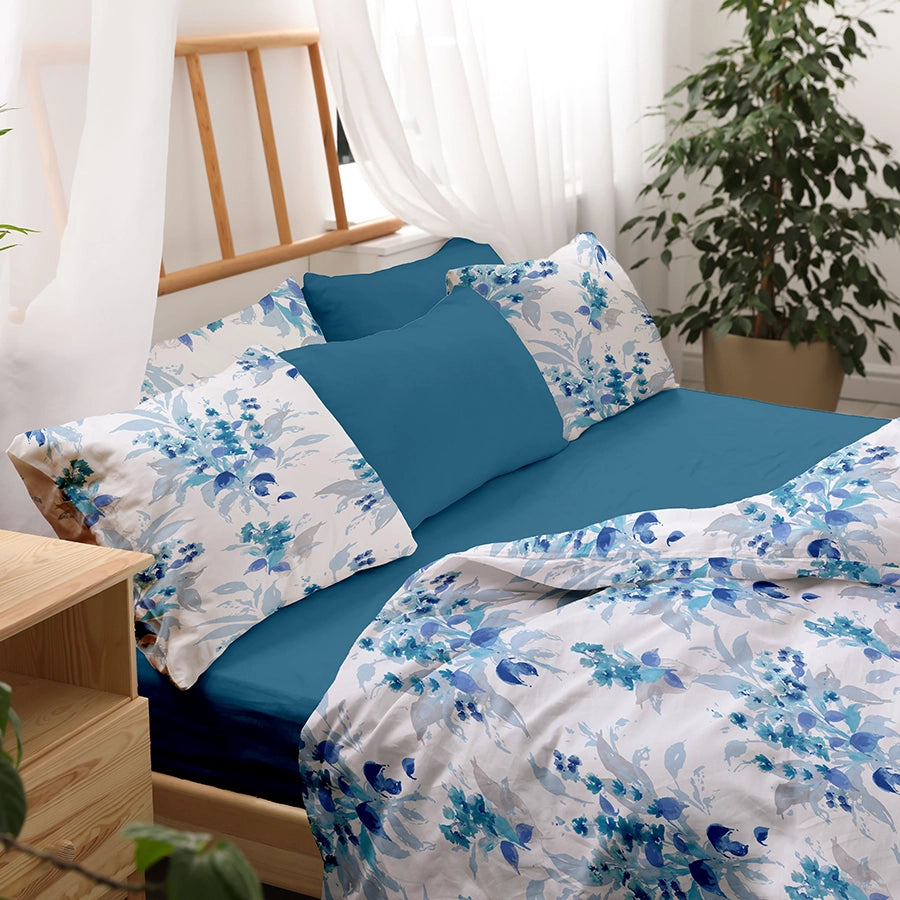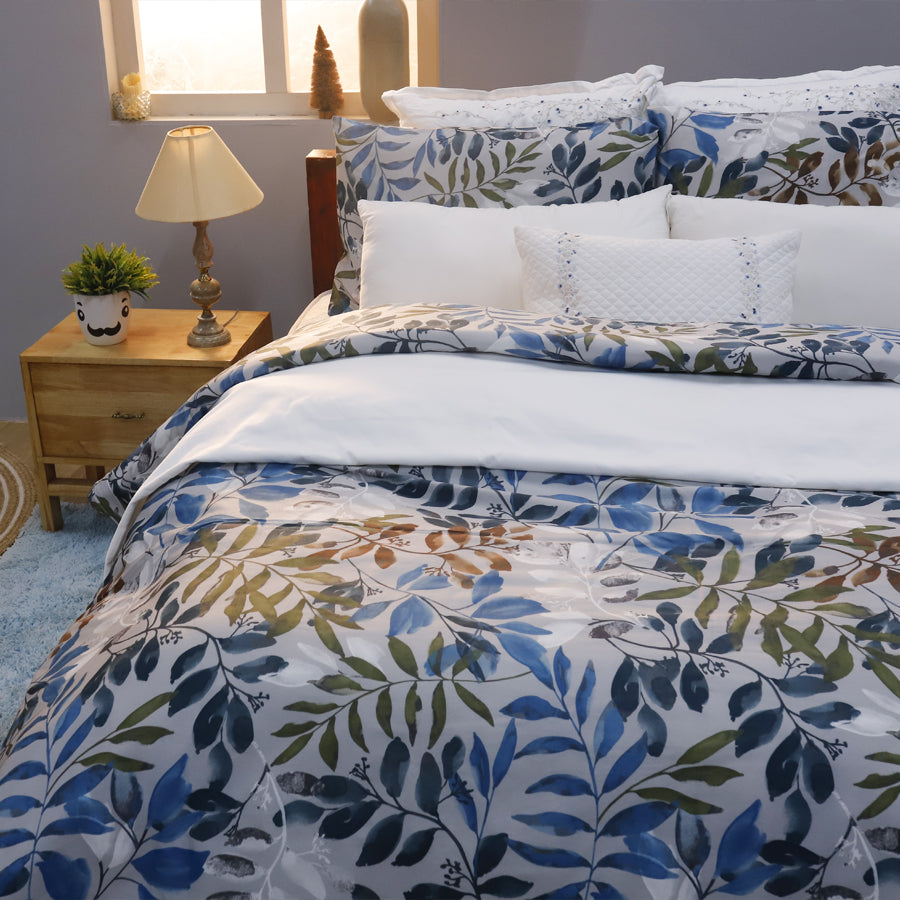How To Choose The Right Bedsheet Material?
A good night’s sleep is essential for everyone. We love to sleep comfortably. Choosing the right bed sheet is key to this quest for slumber. The right bed sheet material is not only necessary for proper sleep but also important to stay healthy, as we spend almost eight hours in bed.
To choose the right bed sheet, you should understand some basics about the different fabrics that go into the manufacturing of sheets, the thread count, and such. When it comes to your comfort, there can be no compromise.
First and foremost, choose a label that delivers what it promises. A brand like Blue Dahlia, which is all about quality, is a good bet. The material that you choose depends largely on various factors. But before we delve into those, let us take a look at the different materials that are available at present.
1. Cotton
Organic cotton is one of the most preferred materials for bed sheets. This material is durable, breathable, lightweight and versatile. It is one of the best materials to use in summer or a tropical country like India. Ethically sourced organic cotton also does minimal harm to the environment. It is largely allergen-free and does not contain harsh chemicals. Therefore, it is safe for people of all ages. This material is also highly durable.
2. Egyptian cotton
Since the time of Cleopatra, Egyptian cotton has captured the hearts of millions of people worldwide. This material is light and soft, and if manufactured using the right techniques, it creases less than most other cotton varieties. The fibre is slightly longer than the variety found in India, and this material is said to be more durable than most other varieties of cotton.
3. Hygro cotton
Hygro cotton is also called hollow core yarn. This material grows softer after every wash. It is also known for its ability to regulate temperature. It stays warm in winter and cool during summers.
4. Linen
Linen is another material that has gained a cult following. This is because it is extremely breathable and lightweight. This material is great for summer. It also lends an elegant and classy look to your bedroom. Linen usually comes in light colours, adding to the overall look of your bedroom. The downside is that linen creases easily.
5. Satin/Silk
The two glossy materials we use in bedsheets these spell luxury like nothing else. However, owing to the slippery smoothness of these materials, they are not ideal for everyday use. They also retain heat and would be useful during winter but uncomfortable during summer. These are highly expensive and could be classified as materials that signify pure indulgence.
6. Polyester
A synthetic material, polyester is the material of choice for people who choose durability over feel. This material combines the softness of cotton, the warmth of flannel and the durability that only a synthetic fibre can offer. This fabric is highly stain-resistant as well.
Now that you know the common materials manufacturers use in bed sheets, it is time to learn how to choose the perfect material for your bedroom. Here are some factors that you could consider to make sure you opt for the right material to enjoy a deep slumber.
- Requirement
With varying temperatures, climatic conditions and preferences, no material is a worldwide favourite. However, organic cotton is the most popular material for bedsheets. Egyptian cotton bedsheets have been the preferred choice of bedding for ages, and organic cotton producers in India are not far behind.
Cotton bed sheets are the best bet in a tropical country like India, where humidity and temperature play a pivotal role in how our houses are styled. Gone are the days of coarse bed sheets made of handloom cotton. Today, the same organic cotton bedsheets come in various finishes and can be customised to suit the style needs of every household.
If you prefer more warmth, especially during the monsoon or winter, then you could opt for poly-cotton bed linen, which would give you a look and feel of cotton bed sheets but is warmer when used.
For those who like to add some glitz and glamour to their bedroom, there are satin finish bed sheets that add the oomph factor but are quite uncomfortable to sleep on, and then there are cotton sheets that come in a sleek, glossy satin finish, which would be more comfortable to use.
- Weave
The weave is another factor to consider when choosing the right material for your bed sheets. The most common weaves are percale and sateen. The basic grid-like weave that manufacturers use for most bed sheets is called the percale. Sateen gives a silky finish to the product and is softer than the percale. According to brands like Nordstrom, customers prefer the soft feel of the sateen weave over the functional percale weave.
- Thread count
The thread count is an important factor when deciding the right material for your bed sheet. If you buy an organic cotton bed sheet, the ideal thread count would be between 200 and 300. However, due to manufacturing techniques, many brands have used multi-ply yarns in their products.
This makes the thread count high, although there is no change in quality. Therefore, when you are choosing the right material for your bed sheet, make sure to check the fibre that is used and whether the thread count that the manufacturer has specified corresponds to it.
- Feel
Since you are spending a lot of time in bed, it is ideal that the bed sheet feels soft and comfortable. Coarse, thick bed sheets could hinder your rest and leave you feeling itchy and restless throughout the night. So, while choosing the material for your bed sheet, it would be a good idea to feel it in your hand and decide if you like how soft it is to touch and how light it feels in your hands. If it feels itchy or uncomfortable while you touch it, chances are that it would be a lot more uncomfortable to sleep on.
- Breathability
A heavy bed sheet made of a close weave could be less breathable than a lighter one. For example, if you require a light bed sheet that cools down during the night, then a flannel bed sheet should be the last thing you buy.
- Ease of maintenance
Bed linen is something you use daily. While choosing a material to adorn your bed, you should also consider how easy it is to maintain. You should check for the type of water it requires so it doesn’t shrink easily, what kind of detergent you need, and if you can wash it at home, so you don’t have to make a trip to the dry-cleaners every week.





Leave a comment